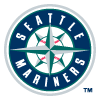This article is part of our Pitching 3D series.
Welcome to Part 2 in our series of intriguing arms through the league. Last week, I analyzed the pitchers of the National League West and introduced the concept of balance with respect to mechanics.
We'll stay within the western divisions today, skipping over to the American League. Once gain, I will use the three-pronged approach of stats, stuff and mechanics to evaluate one pitcher per ball club, and this week we'll turn our mechanical attention to the subject of posture.
Posture
Posture is an extension of balance (covered last week), and both subjects make up the stability portion of the mechanics report card. Just like balance, posture is measured by looking at the head relative to the pitcher's center of mass, but posture is easier to evaluate because it takes place in a single plane and at a particular point in the kinetic chain of the delivery. Ideal posture is identified with an upright spine and a stable head position that stays directly above the body.
With posture, we are looking specifically at the X-plane head position (first-to-third base direction) and the amount of spine-tilt that the pitcher exhibits at release point. A pitcher with poor posture at release point will engage excessive spine-tilt (usually to the glove-side) that results in the head bailing out during the highest-intensity part of the motion. Tilting the spine will also result in an elevated release point, so some pitchers will intentionally manipulate the arm slot by engaging spine-tilt, resulting in poor posture.
The
Welcome to Part 2 in our series of intriguing arms through the league. Last week, I analyzed the pitchers of the National League West and introduced the concept of balance with respect to mechanics.
We'll stay within the western divisions today, skipping over to the American League. Once gain, I will use the three-pronged approach of stats, stuff and mechanics to evaluate one pitcher per ball club, and this week we'll turn our mechanical attention to the subject of posture.
Posture
Posture is an extension of balance (covered last week), and both subjects make up the stability portion of the mechanics report card. Just like balance, posture is measured by looking at the head relative to the pitcher's center of mass, but posture is easier to evaluate because it takes place in a single plane and at a particular point in the kinetic chain of the delivery. Ideal posture is identified with an upright spine and a stable head position that stays directly above the body.
With posture, we are looking specifically at the X-plane head position (first-to-third base direction) and the amount of spine-tilt that the pitcher exhibits at release point. A pitcher with poor posture at release point will engage excessive spine-tilt (usually to the glove-side) that results in the head bailing out during the highest-intensity part of the motion. Tilting the spine will also result in an elevated release point, so some pitchers will intentionally manipulate the arm slot by engaging spine-tilt, resulting in poor posture.
The benefit of downhill plane perpetuates such manipulation, but spine-tilt carries a pair of costs, as poor-posture pitchers tend to have poor command (for the same reason that we don't bend the spine when performing other throwing actions), and every one inch that the head is displaced from the center-of-mass will cost the pitcher nearly two inches of depth at release point. The second factor is under-appreciated in the modern age, but having a deep release point has numerous advantages, as we have seen with pitchers like Randy Johnson (the tall pitcher who didn't have a tall release).

There is a bonus to excessive spine-tilt, in that a pitcher with an over-the-top slot is more likely to get strikes (in a vacuum), as he generally misses high or low when pitches are mistimed and such locations are easier to invoke swings and strike calls. Pitchers with strong posture, on the other hand, tend to have low arm slots and therefore more lateral variation on their pitch trajectories, and since it is tougher to earn strikes on pitches that miss inside or outside, we often see high walk rates from some of these players. Posture throws a monkey wrench into evaluating walk rates at the extremes for exactly this reason because pitchers with poor command but an over-the-top slot can have deceivingly-low walk rates, while strong-posture pitchers with strong command can have deceivingly-high walk rates.
Posture has a direct impact on arm slot. We look at a pitcher's slot from the batter/catcher/umpire's point-of-view, comparing the arm to that of a clock. A right-handed pitcher with a sidearm delivery (and great posture) will have his arm come through at nine o'clock from the hitter's perspective (a southpaw sidearmer would come through at three o'clock). A pitcher who throws directly over-the-top (like Gallardo in the above picture on the left) is approaching 12 o'clock with his arm slot. Most right-handers fall between 10 and 11 o'clock, with the amount of spine-tilt raising his arm slot closer to high noon.
Most pitchers have some tilt, as it's extremely difficult to maintain stability during the highest-intensity phases of the pitching delivery. This is why we see many pitchers whose posture looks excellent during warmups but whose head bails out on pitches that matter, as they struggle to maintain stability at such high levels of intensity.
A quick note as we dive into the AL West: whenever possible, I will veer towards those game feeds that have a center-field camera setup directly behind the pitcher, rather than off-set at an angle. The angled views introduce a parallax effect that confuses the assessment of posture, so I will lean towards certain feeds. In the American League that means that I will be using games that were played in Tampa Bay or Minnesota, as those two ballparks provide the most direct angles for evaluating posture.
Lance McCullers
McCullers could be an impact arm for Houston this season, with the potential to zoom up the pecking order and become the No. 2 starter behind Dallas Keuchel in the Astros rotation. He skipped Triple-A and went straight to the majors after 32.0 innings in Double-A, making 22 big league starts and is now an integral cog in the Houston machine.
Stats: The right-hander struck out more than a batter-per-inning in his introduction to the majors, finishing the 2015 season with a 3:1 K:BB ratio. The strikeouts were unsurprising given his rate of 10.7 K/9 in the minors, but his solid walk rate was a pleasant surprise. McCullers had 4.5 BB/9 in the minors, including 14 free passes in 32 frames last season for Corpus Christi, then the walk rate cratered (in a good way) to 3.1 BB/9 in 125.7 innings at the highest level. The Ks will be there for McCullers in 2016, but his ability to harness the walks will likely decide his value on fantasy rosters.
Stuff: McCullers averaged a hefty 95.3 mph on his fastball last season, but it was the curveball that gave batters fits. His hammer was responsible for 81 of his 129 strikeouts (62.8 percent) last season according to Brooks, and batters hit a collective .159 with a .074 ISO in the 189 at-bats that ended on the pitch. The key is his ability to bury the curveball and invoke batter swings on dirty pitches, as 42.3 percent of his curves finished below the strike zone last season yet only 37.5 percent of hammers finished in the zone.
Mechanics: The spine-tilt for McCullers occurs late in the delivery but is typically quite modest, resulting in plus posture at release point on most of his pitches despite whirlwind arm speeds. Some pitchers exaggerate spine-tilt on the breaking ball to manipulate pitch trajectory, but McCullers maintains the same arm slot regardless of pitch type. The 60-grade is more of a peak for the right-hander, whose posture often falls into the 55 zone but remains consistently above-average, which is particularly impressive considering the amount of power (momentum and torque) in his delivery.

Garrett Richards

The Angels have the payroll of a postseason mainstay, but myriad problems have blocked their ascent to the top of the AL West. Chief among those is a soft starting rotation, and though Andrew Heaney will likely be an important cog all season, the ability for the Angels to go deep in the playoffs likely rests on the right arm of Richards, the one pitcher on staff who can match up with anyone on the right day.
Stats: Richards threw 38.2 additional innings and uncorked seven fewer wild pitches, yet still led the majors in the category. His transition to starting has been an unquestioned success, as he struck out 340 batters in 376 innings of 3.18 ERA baseball across 58 starts for the Angels, a period made even more impressive when one considers the gruesome knee injury that prematurely ended his 2014 season. Richards has been particularly tough against the long ball, with just 25 home runs allowed over the past two seasons, though 20 of those were hit last season and the stingy line of 2014 might have been a fluke.
Stuff: The right-hander is the rare player who transitioned from the bullpen to the rotation and yet gained velocity despite being stretched out for longer outings. He averaged 97.1 mph on his fastballs in 2014 after registering an average of 95.4 mph from the bullpen the year prior. Last year he came back to earth a bit with an average of 96.1 mph on the heat, a figure that was a full tick behind 2014 but was still ahead of his bullpen days. Richards has been anything but conventional with his pitch-speed thus far in his career, so it will be interesting to see what he brings to the table in 2016.
Mechanics: The posture isn't pretty, ranking more than a full deviation worse than the average MLB hurler. The postural stability looks even worse due to his violent head-whip and an extremely closed stride, such that his body and all of his energy has to contort back toward the plate after foot strike despite directing everything toward the third-base dugout during the stride phase of his delivery. This S-pattern of kinetic energy – in which the pitcher strides one direction and then directs his rotation in the opposite direction – is personified by teammate Jered Weaver, who has had a bad influence on his rotation mate.

Sonny Gray

Gray is the top dog of the Oakland staff and the one man supposedly deemed untouchable by GM Billy Beane, but one gets the feeling that the first half of the 2016 season will be an open audition for the July 31 trade deadline. The intrigue with Gray lies in his ability to beat his peripheral stats, as he spent most of the 2015 season as the AL's version of Zack Greinke in terms of run prevention yet lacking the the outstanding ratios that one associates with an ace.
Stats: In just over two MLB seasons, Gray has a cumulative ERA of 2.88 despite a modest 20.4 percent K-rate since the start of 2014 and a 7.7 percent walk rate that is a dead ringer for the MLB average. He has squelched hits and homers alike in each campaign of his career, never surrendering more than 7.7 hits or 0.7 home runs per nine innings. The latter keeps his FIP in the mid-threes, but his peripheral stats still paint the picture of a pitcher whose ERA is a half-run higher than that of Gray.
Stuff: Gray throws two distinct breaking balls, and while he favored the curveball over the slider by a nearly three-to-one margin in 2014, he flipped the script last year and threw more sliders than hammers. Both pitches have been very effective but his usage patterns have changed, at least when a strikeout is in order. Gray threw the curve 44 percent of the time against batters from both sides when he got to two strikes in 2014, utilizing the slider just 11-percent of the time in those situations, but in 2015 that switched to 44 percent sliders and eight percent curves, with the slider holding that frequency against both left- and right-handed batters.
Mechanics: Gray's posture has gotten a bit worse each season as his arm slot has progressively become more over-the-top. I gave him a 45-grade for posture based on his 2014 delivery, but most of the pitches that he executed in 2015 had slipped another half-notch, leaving him with a 40-grade this time around. The progression of his spine-tilt has impacted the action on his pitches, such that his changeup was registering as a cutter in pitch classification systems.

Taijuan Walker

Walker had a horrific start to the 2015 season, carrying a 7.33 ERA after nine starts following a shutdown spring that encouraged copious hype in fantasyland for the top prospect. Walker rebounded in a major way, dominating the competition for six weeks before everything reverted, and that roller coaster ride exemplified the 2015 season for Walker. He enters this season with a wide range of potential outcomes, but the ceiling of performance is too high to ignore.
Stats: Over his final 20 starts of the 2015 season, Walker carried a 3.62 ERA and 118 strikeouts against just 17 walks in 126.7 innings of work, this after walking 23 batters in his first 43 frames. There were a few hiccups over that stretch, but he essentially justified all of the preseason hype and his fantasy stock would look much differently if he had spent the first six weeks of the 2015 campaign down in Tacoma rather than getting tattooed at the highest level.
Stuff: Walker's fastball checked in at an impressive 94.8 mph last season, but it's his reliance on the split-finger pitch that carries the most intrigue. He also throws a curve and cutter, but the split was Walker's secondary of choice, as he went to the pitch 18.4 percent of the time last season (more than twice as often as either of the other secondaries), with mixed results. Walker allowed an incredible .404 BABIP on the split but the pitch generated his lowest ISO against (.121), as plenty of ground balls found pasture, but he could enjoy a performance spike next season if he normalizes the results on his split.
Mechanics: Walker finishes with strong posture at release point, and though he will slip down to the 55 range I still felt comfortable putting a plus grade of 60 for his overall posture grade. There is very little spine-tilt and at his best Walker can scrape a 65-grade for posture, but the fact that he can show a 55 and a 65 in the same outing underscores his volatility and current lack of repetition. Such is to be expected from young players, and an improvement to Walker's consistency would go a long way in cementing his fantasy value.

Yu Darvish

Darvish missed the entire 2014 season due to Tommy John surgery that was performed in the spring. Standard recovery time would have him on a big-league mound before the All-Star break, and best-case scenarios might even have him breaking camp with the team out of spring training. On the other side of the coin, Darvish could have complications in his rehab that could keep him shelved long into the 2016 season.
Stats: Until Kershaw accomplished the feat last year, I though that no other pitcher had a better chance to crack the 300-K barrier than Darvish. He had led the majors with 277 strikeouts in 2013, whiffed another 30 percent of the batters that he faced in 2014, and seems poised for another campaign of greater than 10 K/9 if he comes back healthy. His walks can get out of hand at times, and Darvish hasn't proved to be as tough to hit as his strikeout rate might suggest, but the right-hander will have immense fantasy value as long as Ks reign supreme and his health remains intact.
Stuff: Darvish's slider is one of the nastiest pitches in the big leagues, ranking right up there with The Defector of Jose Fernandez as the goofiest-looking pitches on the planet. The slider is just one weapon in a deep arsenal of pitches (Brooks has identified eight distinct pitches that he throws), but it has been responsible for more strikeouts than any other club in his bag, and in the epic 2013 campaign Darvish's slider was responsible for 134 of his strikeouts. It takes a high degree of supination (forearm rotated inward, like a karate chop) to execute the pitch effectively, an aspect which can increase the physical toll on the throwing elbow, so it will be interesting to see if he taps the breaks on his slider usage in his return from Tommy John surgery.
Mechanics: Darvish has command that far exceeds his walk rates, but the movement on his pitches can interfere with his best-laid plans. The below snapshot (from 2014) reflects a posture that lies on the border between 70- and 80-grade, and I have seen enough deliveries with perfect posture from Darvish to give him the ever-elusive 80-grade. The fact that he missed last season obviously makes it impossible to monitor any development in this area, but I will be keying on his posture when Darvish gets back on the mound to monitor how close he is to his pre-surgery form.










